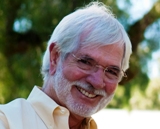Irrespective of who’s anointed at the presidential coronation in January, many more Americans will soon be performing national service, including compulsory military tours of duty in the never-ending War Against Terror and the soon-to-be-announced Wars Against Sedition, Starvation, Unemployment, and Internal Insurrection, et cetera, et cetera, et cetera.
John McCain has said, “After 9/11, I think we made a mistake by telling Americans they ought to go on a trip, or shop. I think we should’ve told Americans to join the military, the Peace Corps, AmeriCorps, volunteer organizations – all the organizations that allow people to serve this nation.” Most recently, he asked “for a concrete plan of action on the need for all of us to serve.”
Not to be outdone, Barack Obama has a Plan for Universal Voluntary Citizen Service, which will help “All Americans Serve Their Country.” He wants to double the Peace Corps, triple the AmeriCorps, and expand VISTA, the USA Freedom Corps, the Senior Corps, and the YouthBuild Program. In addition, he wants to deploy a new Classroom Corps, Health Corps, Clean Energy Corps, Veterans Corps, Green Job Corps, and a Homeland Security Corps. Regarding the last one, he has said, “We cannot continue to rely only on our military in order to achieve the national security objectives we’ve set. We’ve got to have a civilian national security force that’s just as powerful, just as strong, just as well-funded.”
Bipartisanship abounds. Senators Ted Kennedy and Orrin Hatch have filed legislation to increase the number of Americans who participate in volunteer programs from 61 million to 100 million. Using AmeriCorps as a model, the senators propose five new “corps” for volunteers, including international service, disaster relief, green energy, and education and poverty. The bill creates tax breaks for businesses that give workers paid time off and establishes “encore fellowships” for baby boomers seeking alternative retirements.
Volunteering is good, no doubt. However, while unpaid, out-of-work volunteers may help, they cannot solve the critical problems we are facing in education, health care, energy, national security and even unemployment. These complex problems cannot be overcome by armies of untrained volunteers, no matter how well intended. Volunteer service must have real value, both in terms of the actual service performed and the benefit to the provider.
There is a real risk that “volunteerism” will morph into “compulsion.” With joblessness soaring, along with food, fuel and medical costs, foreclosures and evictions, how long will it take our well-fed and over-paid “leaders” in both parties to decide that work (“public service”) should be the price of public assistance? Once we have millions of hungry people out of work, out of benefits, and out of hope, will our “civilian national security force” be deployed to maintain order? At foreclosures and evictions? At food lines? At work gangs?
Another problem with the various volunteer initiatives being bandied about is that none allow voluntary public service as an alternative to the specter of compulsory military service lurking just around the bend.
The Military Draft
Established in 1940, the “Selective Service” created America’s 13-million-man military in World War II, and thereafter continued to conscript young men to staff military vacancies that couldn’t be filled by voluntary enlistments. The military draft ended in 1973 following the Vietnam War, primarily because it had targeted those who, because of a lack of wealth or opportunity, could not obtain college deferments.
All males between the ages of 18 and 25 living in the United States, including undocumented immigrants, are still required by law to “register” for the draft. The Selective Service System is on standby and, if activated by Congress, a lottery will be used to determine the order of call up, and college students will be able to defer service only until the end of their current semester of study (or the end of their academic year for seniors).
The all-volunteer military has not reduced the inequities of service between the rich and poor and between minorities and whites in its ranks. Volunteers of color continue to be recruited into the military at a percentage greater than their representation in the total population. The disproportion increases substantially with income, resulting in a class disparity in the active duty military. The children of wealthy white people have more opportunities and face fewer risks.
As the Iraq War moves toward its sixth year, the percentage of recruits the Department of Defense considers “high quality” has dropped considerably resulting in greater class inequities, even as fewer African Americans are choosing to enlist.
Congressman Charles Rangel (D-NY) has proposed resumption of the military draft to avoid wars: “There’s no question in my mind that this president and this administration would never have invaded Iraq, especially on the flimsy evidence that was presented to the Congress, if indeed we had a draft and members of Congress and the administration thought that their kids from their communities would be placed in harm’s way.” He advises, “For those who say the poor fight better, I say give the rich a chance.”
A large majority of Americans disagree with Congressman Rangel, with 64 percent opposed to a military service draft. However 73 percent would welcome young people volunteering to serve their country, and 43 percent would accept a draft if young people could choose nonmilitary service instead.
Commenting on the draft last September, McCain said, “I might consider it, I don’t think it’s necessary, but I might consider it if you could design a draft where everybody equally could serve.” At a McCain campaign event in August 2008, an audience member said, “If we don’t reenact the draft, I don’t think we’ll have anyone to chase Bin Laden to the gates of hell.” McCain responded, “Ma’am, let me say that I don’t disagree with anything you said ....”
(Note: You can view every article as one long page if you sign up as an Advocate Member, or higher).





